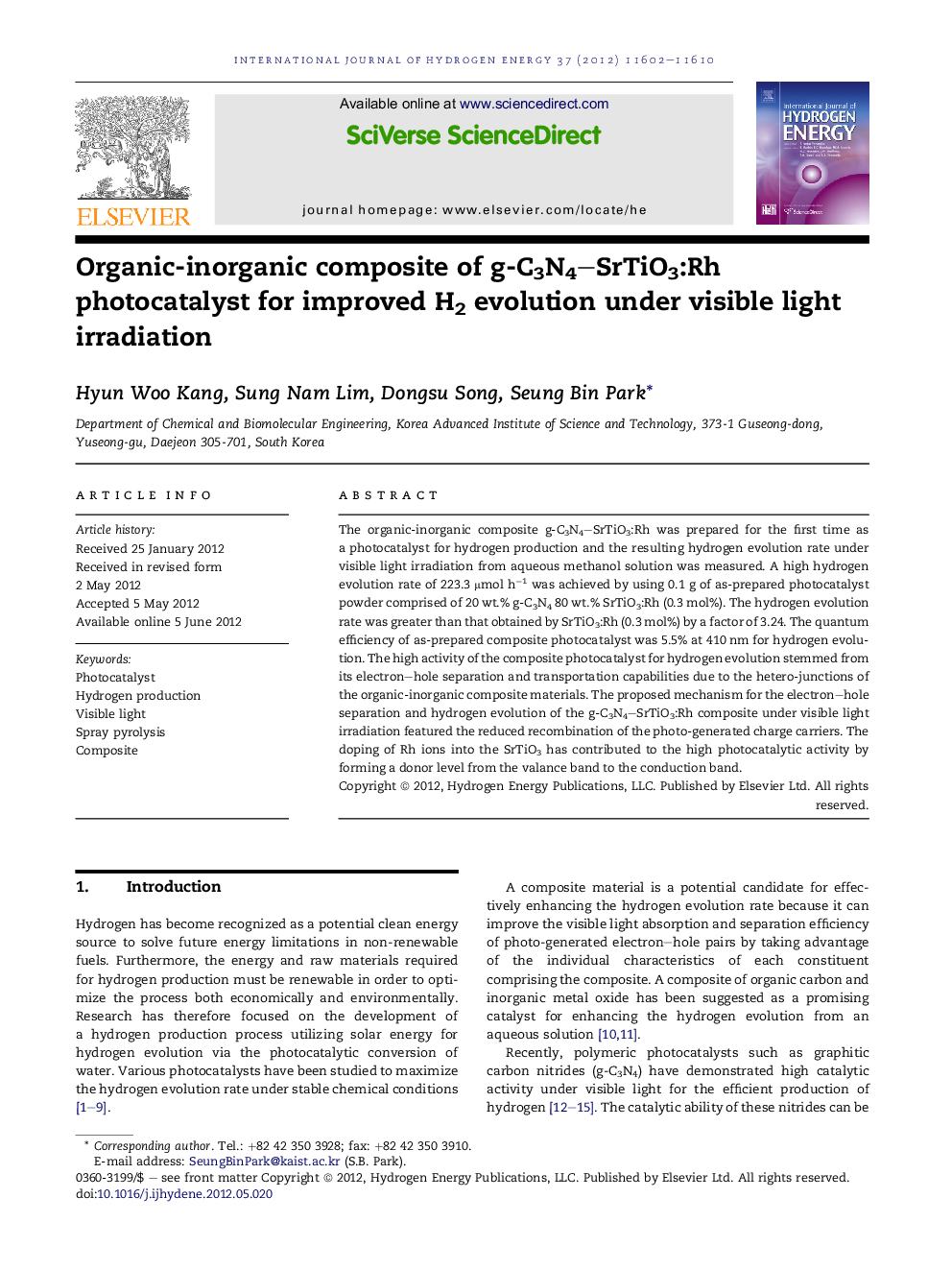| Article ID | Journal | Published Year | Pages | File Type |
|---|---|---|---|---|
| 1275027 | International Journal of Hydrogen Energy | 2012 | 9 Pages |
The organic-inorganic composite g-C3N4–SrTiO3:Rh was prepared for the first time as a photocatalyst for hydrogen production and the resulting hydrogen evolution rate under visible light irradiation from aqueous methanol solution was measured. A high hydrogen evolution rate of 223.3 μmol h−1 was achieved by using 0.1 g of as-prepared photocatalyst powder comprised of 20 wt.% g-C3N4 80 wt.% SrTiO3:Rh (0.3 mol%). The hydrogen evolution rate was greater than that obtained by SrTiO3:Rh (0.3 mol%) by a factor of 3.24. The quantum efficiency of as-prepared composite photocatalyst was 5.5% at 410 nm for hydrogen evolution. The high activity of the composite photocatalyst for hydrogen evolution stemmed from its electron–hole separation and transportation capabilities due to the hetero-junctions of the organic-inorganic composite materials. The proposed mechanism for the electron–hole separation and hydrogen evolution of the g-C3N4–SrTiO3:Rh composite under visible light irradiation featured the reduced recombination of the photo-generated charge carriers. The doping of Rh ions into the SrTiO3 has contributed to the high photocatalytic activity by forming a donor level from the valance band to the conduction band.
► The organic-inorganic composite g-C3N4–SrTiO3:Rh was prepared for the first time. ► The activity of composite is higher than that of either single phase material. ► The enhanced activity is due to improved charge separation and transportation.
